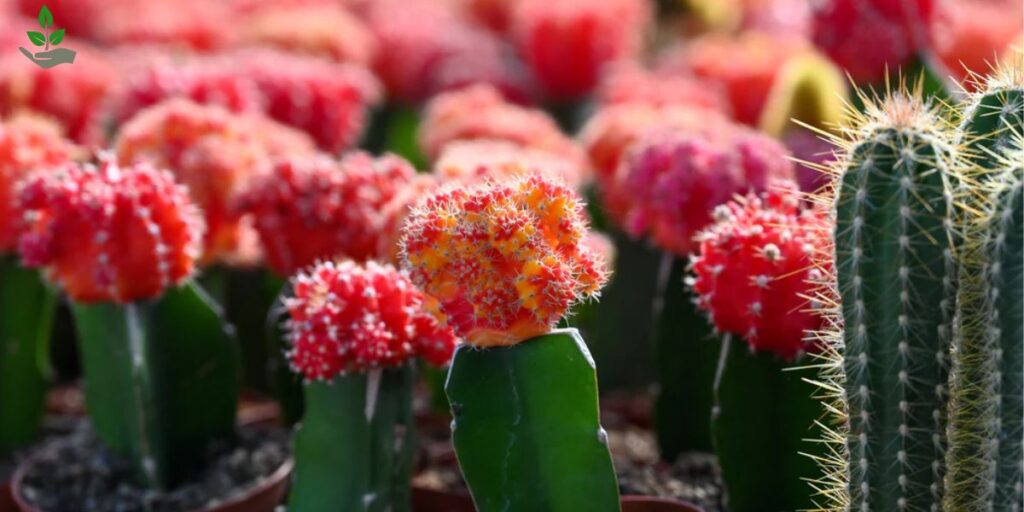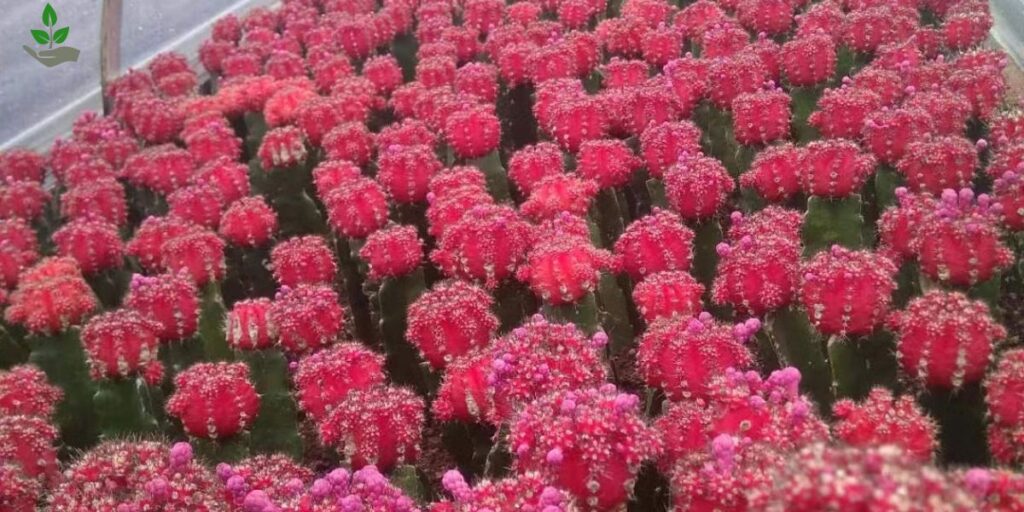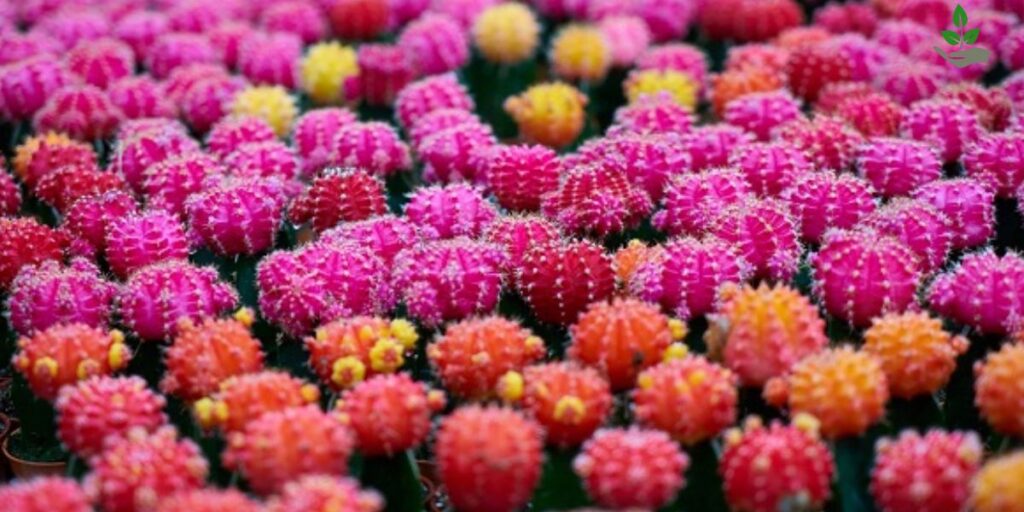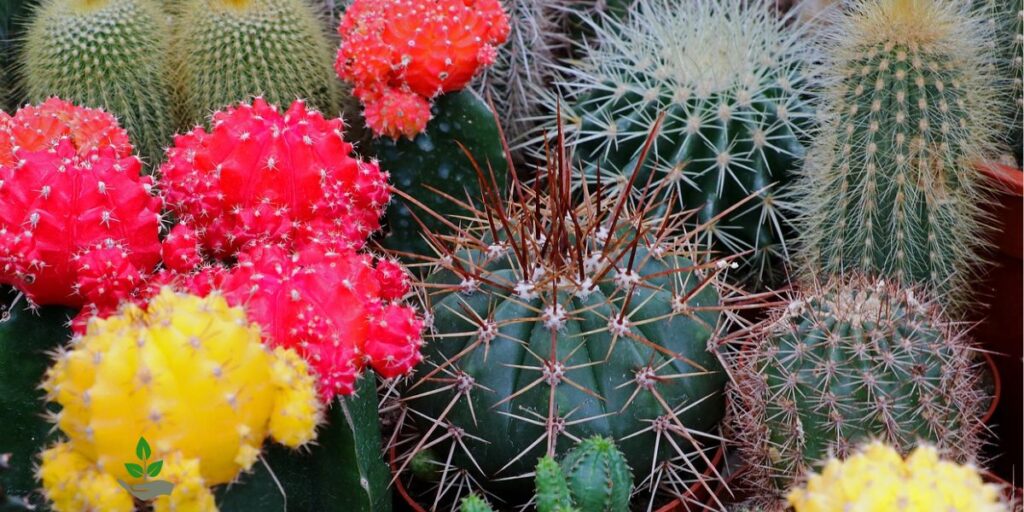Moon Cactus Care, Planting, Types And Benefits
That the vibrant colors of the Moon Cactus are not just for show, These stunning plants with their unique appearance and easy care requirements have become a favorite among houseplant enthusiasts. The essential aspects of Moon Cactus Care planting techniques, their typical height and the numerous benefits they offer to your indoor garden.
By the end, be equipped with all the knowledge you need to keep your Moon Cactus thriving and colorful. including optimal planting tips, expected growth height, and the myriad benefits these plants can bring to your home.
What is a Moon Cactus?
The Moon Cactus scientifically known as Gymnocalycium mihanovichii is a unique and vibrant plant that captivates enthusiasts with its striking appearance. This intriguing species is characterized by its brightly colored top which is a mutation of the cactus that lacks chlorophyll rendering it unable to photosynthesize effectively.

Instead it relies on a host cactus typically from the Hylocereus genus for sustenance. This symbiotic relationship not only showcases nature ingenuity but also allows for a stunning display of colors ranging from deep pinks to neon yellows making it a popular choice for both novice and seasoned plant lovers.
Moon Cactus History
The Moon Cactus, scientifically Gymnocalycium mihanovichi has a fascinating history that intertwines nature and human ingenuity. Native to the arid landscapes of South America, particularly Argentina and Paraguay, this unique plant is a grafted species that showcases the remarkable symbiosis between two different cacti.
The vibrant, colorful top, typically bright pink or yellow, is actually a mutation of the Gymnocalycium genus, which lacks chlorophyll. This striking appearance has captured the attention of plant enthusiasts and collectors worldwide leading to its popularity in cultivation.
Moon Cactus Overview
| Common Name | Moon Cactus |
| Botanical Name | Gymnocalycium mihanovichii |
| Family | Cactaceae |
| Origin | South America, Argentina, Paraguay, and Brazil |
| Height | 3 to 6 inches (7.5 to 15 cm) |
| Fragrance | Don’t have any fragrance |
| Toxicity | Non-toxic to humans and pets |
| Life Span | 3 to 5 years |
| Leaf Colours | Colorful, spherical top |
What Are Moon Cactus Types?
- Red Moon Cactus
- Yellow Moon Cactus
- Orange Moon Cactus
- Pink Moon Cactus
- Variegated Moon Cactus
Read More: 80 + Amazing Flowers Name In Malayalam And English
Red Moon Cactus
The Red Moon Cactus, scientifically known as Gymnocalycium mihanovichii stands out not just for its vibrant color but also for its unique growth habit. Unlike many cacti that thrive in arid conditions this striking specimen is often grafted onto a green cactus base typically a Hylocereus to enhance its ability to survive.

This grafting process allows the Red Moon to flourish despite its lack of chlorophyll giving it its iconic bright red or pink hue. The contrast between the vivid top and the robust green base creates a visually stunning plant that captures the attention of both novice gardeners and seasoned collectors alike.
Yellow Moon Cactus
The Yellow Moon Cactus, scientifically known as Gymnocalycium mihanovichii var. friedrichii, is a striking example of nature’s artistry, often celebrated for its vibrant yellow to bright orange coloration. What makes this cactus particularly fascinating is its unique ability to thrive without chlorophyll, the pigment responsible for the green hue in most plants.
Instead it relies on a host plant, typically a green cactus, for sustenance through a symbiotic relationship. This adaptation not only showcases the resilience of life but also highlights the intricate interdependencies within ecosystems.
Orange Moon Cactus
Caring for the Orange Moon Cactus requires a delicate balance of sunlight and moisture. While it thrives in bright, indirect light, too much direct sunlight can scorch its vivid colors. Watering should be approached with caution, allowing the soil to dry completely between waterings and preventing root rot, ensuring the health of both the vibrant top and its supportive base.
Additionally, the Orange Moon Cactus can serve as an excellent conversation starter or a stunning centerpiece in any home decor, attracting attention with its unusual appearance and vibrant personality. With proper care, this captivating plant can flourish for years, making it a cherished addition to any collection.
Pink Moon Cactus
The Pink Moon Cactus, scientifically known as Gymnocalycium captivates plant enthusiasts with its vibrant, neon hues and unique growth patterns. This striking cactus is characterized by its colorful top portion which is actually a grafted mutation of the species. The vivid pinks, reds, and yellows are not just for aesthetics; they stem from a lack of chlorophyll making the plant reliant on its green rootstock for photosynthesis.
This fascinating relationship between the two parts exemplifies nature ingenuity in survival and adaptation. Growing a Pink Moon Cactus can be a rewarding experience for both novice and seasoned gardeners. They thrive in bright, indirect light and require minimal water, making them perfect for busy lifestyles or those living in urban settings with limited access to outdoor gardening spaces.
Variegated Moon Cactus
The Variegated Moon Cactus, known scientifically as Gymnocalycium var. friedrichii, is a striking specimen that captures the imagination with its vibrant colors and unique growth patterns. Unlike typical cacti, which thrive in arid environments, this fascinating plant thrives on the genetic mutation that gives rise to its stunning variegation often displaying hues of yellow, pink, and orange. The vivid coloration results from the absence of chlorophyll in the upper part of the cactus, requiring it to graft onto a green host cactus for sustenance.

This symbiotic relationship not only enhances its aesthetic appeal but also offers an intriguing glimpse into the complexities of plant biology. Caring for a Variegated Moon Cactus can be both rewarding and enlightening. These cacti prefer bright, indirect sunlight and well draining soil to thrive making them ideal candidates for indoor gardening. However their unique nature means they require a bit more attention than traditional cactus; overwatering can quickly lead to root rot, while insufficient light can dull their vibrant colors.
Guide About Moon Cactus
Moon cacti scientifically known as Gymnocalycium mihanovichii are not only visually striking with their vibrant often neon colored tops but also represent a fascinating example of plant adaptability. These unique cacti are grafted onto a rootstock typically a green cactus like.
Hylocereus which provides the necessary nutrients and stability for the colorful chlorophyll deficient top. This symbiotic relationship highlights the ingenuity of nature showcasing how plants can thrive in conditions that might otherwise hinder their growth.
Moon Cactus seeds
originating from the vibrant and unique Gymnocalycium mihanovichii, offer an intriguing avenue for both novice and experienced gardeners. Growing moon cactus from seeds can be a rewarding challenge, as germination requires specific conditions. A well draining soil mix, combined with adequate warmth and indirect sunlight, creates an ideal environment for these seeds to sprout.
Patience is key the process can take several weeks, but witnessing the transformation from tiny seeds to vibrant cacti is immensely satisfying. Moreover cultivating your moon cactus not only allows for a deeper connection with the plant but also opens up opportunities for creativity in your gardening practice. Experimenting with different grafting techniques can lead to unique color combinations and shapes, further enhancing the allure of this fascinating species.
Moon Cactus Planting And Growing
Moon cacti with their vibrant, colorful crowns perched atop a green base offer a unique twist to traditional houseplants. These intriguing hybrids are typically grafted from two different species: the colorful Gymnocalycium mihanovichii which lacks chlorophyll and a green cactus like
Hylocereus which provides the necessary nutrients through photosynthesis.
When planting moon cacti it is essential to use a well draining cactus mix to prevent root rot as these plants thrive in drier conditions. Consider placing them in a pot with drainage holes to allow excess water to escape promoting healthy growth.
Moon Cactus Care
Moon cacti with their vibrant, colorful tops and unique appearance can be a delightful addition to any indoor garden. One of the key aspects of caring for these fascinating plants is understanding their unique anatomy. The top, or scion is typically a Gymnocalycium species grafted onto a lower cactus rootstock often a Hylocereus. This means that while the bright crown can thrive in low light conditions, the rootstock requires more sunlight and care.

Ensure your moon cactus receives indirect sunlight as too much direct sun can scorch its vivid colors. Allow the soil to dry out completely between watering sessions typically every two to three weeks, depending on humidity and temperature. During the growing season, consider a diluted cactus fertilizer every month to promote vibrant growth.
Additionally keep an eye out for common pests like mealybugs which can be particularly attracted to the colorful tops. A gentle wipe with a cotton swab dipped in rubbing alcohol can help keep these nuisances at bay ensuring your moon cactus remains a stunning centerpiece in your home.
Moon Cactus Propagation
that allows plant enthusiasts to expand their collection while enjoying the unique beauty of these vibrant succulents. Unlike many cacti, the moon cactus is typically grafted onto a hardy rootstock, making it a bit more complex to propagate. However with the right techniques you can cultivate new plants from offsets or even seeds.
This method not only allows for a wider variety of colors but also gives you the satisfaction of nurturing a plant from its very beginning. Each approach offers a unique experience, making moon cactus propagation both an art and a science that appeals to beginners and seasoned gardeners alike.
What are Moon Cactus Tips and Fun Facts?
- Moon Cactus is a succulent so it doesn need frequent watering. Water only when the soil is completely dry typically every 2-3 weeks Overwatering is the most common mistake and can lead to root rot
- Moon Cactus thrives in bright, indirect sunlight. Too much direct sunlight can burn the top while too little light will cause the colors to fade and the plant to weaken.
- Ensure you use a well draining cactus or succulent soil mix You can also add sand or perlite to improve drainage which helps prevent root rot.
- The Moon Cactus is one of the most colorful cacti out there. The vibrant colors red, yellow, orange, pink come from a lack of chlorophyll in the top cactus. This is why grafted onto a green rootstock that provides the nutrients it needs.
- Due to its bright colors the Moon Cactus has become a popular decorative plant, especially in small terrariums or as desk plants. Its small size and striking appearance make it a standout piece in home decor.
Read More: Lavender Tree Care, Planting, Height And Benefits
Conclusion
Moon Cactus care hinges on understanding its specific requirements, such as ideal light conditions and a well draining soil mix. These cacti prefer dry environments, so it’s essential to avoid overwatering and allow the soil to dry out between waterings. Additionally protecting your
Moon Cactus from extreme temperatures and pests will contribute to its longevity and vibrancy. By implementing these strategies you can ensure your Moon Cactus remains a stunning centerpiece in your collection. Start today by assessing your plant’s conditions and making any necessary adjustments for optimal growth.
FAQs
How big do moon cactus get?
The Moon Cactus typically grows to a height of 3 to 6 inches (7.5 to 15 cm), with the spherical, colorful top reaching about 2 to 3 inches (5 to 7.5 cm) in diameter.
Why is my moon cactus squishy?
Your Moon Cactus may be squishy due to overwatering, which leads to root rot or waterlogging. It could also be a sign of underwatering, causing it to lose moisture. Check the soil moisture and ensure proper drainage to help fix the issue.
How to propagate moon cactus?
Moon Cactus is propagated through grafting, where the colorful top is grafted onto a green rootstock cactus. To propagate, cut the top of a healthy Moon Cactus and graft it onto a new rootstock. This process requires careful handling to ensure successful fusion.







